| T O P I C R E V I E W |
| James N. |
Posted - October 23 2011 : 2:37:37 PM
In time for Halloween, I thought I'd post a few pictures taken during my March, 1996, visit to the historic and legendary town, immortalized by what has come to be known as "The Witch Hysteria". Readers of this forum should be familliar with either the 1952 play or the 1996 movie version ( starring as it did, Daniel Day-Lewis and Winona Ryder! ) of playwright Arthur Miller's The Crucible. Miller's version gives the tragedy of the Salem Witch Trials the usual "Hollywood" interpretation involving DD-L's character in a doomed love triangle with Ryder and that of Joan Allen, setting events in motion. This is at least in contrast to the usual simplistic story of girls possessed by the Devil who lash out, accusing their neighbors.
Modern scholarship suggests several different causes for the wide-spread outbreak of accusation and recrimination, including a Xenophobia partly brought on by the events of King Philip's War only twenty years earlier. Salem was a rapidly growing community that had outgrown its original boundaries and began to expand into unfamilliar though neighboring territory, now the township of Danvers, Mass., which led to greed and envy on the part of several residents, but most importantly the family of Thomas Putnam and his wife Ann, Sr., the true villians of this story. They were aided immesurably by Rev. Samuel Parris, spiritual leader of the community, who provided the setting for it all to begin.
Image Insert:
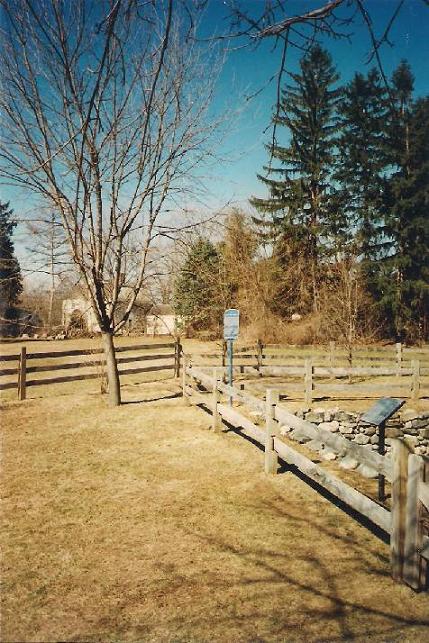
79.98KB
Hell on Earth began in this seemingly-innoccuous vacant lot containing the foundations of Rev. Parris' parsonage; his household included a slave family of now-unknown racial composition but West Indian origins named John and Tituba Indian. Tituba in particular entertained the Parris children and also those of his friend Putnam and others with tales of island voodoo, a taboo subject with the Puritans! For whatever reasons, young Ann Putnam, Jr., along with a couple of others, began to act out the stories and to accuse certain people of having "enchanted" them through "witchcraft", a commonly-held belief among the Puritans and other Seventeenth-Century Europeans. The unlucky Tituba was among the first to be accused, and later said she was beaten into a confession by her master Parris. It is now obvious that Thomas Putnam, along with Parris' connivance, soon began to manipulate his daughter for his own gain.
Image Insert:
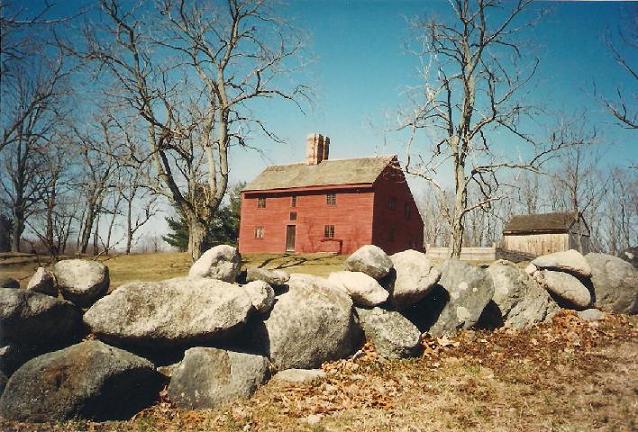
78.74KB
Probably their best-known victim was the aged and ill Rebecca Nurse; following her hanging as a witch her body was secretly brought here to her farm and buried in an unmarked grave somewhere near the still-standing 1678 house. Previously, the accused had been persons of low social standing ( like Tituba ) or even mentally unstable; with Rebecca Nurse, the Putnams began to move against persons in the community they either had grudges against or whose land they coveted, including eventually even Thomas Putnam's brother Joseph.
Image Insert:
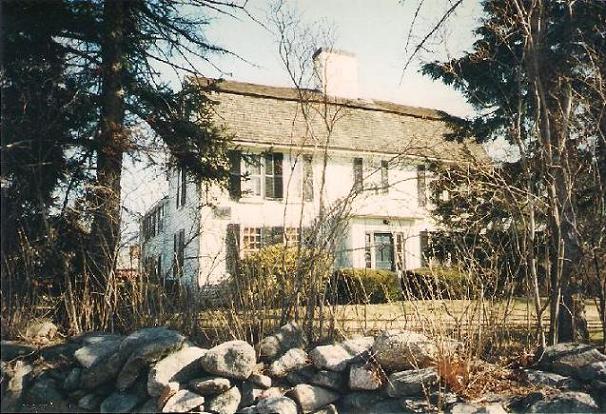
83.48KB
Joseph lived with his family here in Salem Village ( now Danvers ) and early condemned the actions of his brother and sister-in-law, who he told, "If you dare to touch with your foul lies anyone belonging to my household, you shall answer for it." Fearful for his life, it's said he slept with loaded pistols by his bedside and kept horses saddled with which to make a quick escape if necessary. Fortunately, they were never accused, and here in 1718 his wife gave birth to future hero of Rogers' Rangers and Revolutionary War general Israel Putnam.
Image Insert:
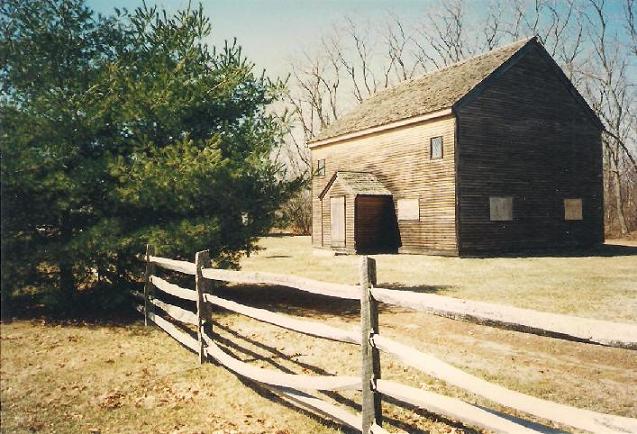
72.33KB
Accused persons were brought for examination to various locations such as Beadle's Tavern, Ingersoll's Ordinary, or the Salem Village Meetinghouse, seen here in a reconstruction. "Here the magistrates interrogated, among others, the notorious 'witches' Sarah Good, Tituba Indian, Martha Corey, and Rebecca Nurse." If found guilty, as almost everyone was, they were then conveyed to Salem proper for trial. Ironically, if the accused "confessed" to being a witch, they were spared, though imprisoned under harsh conditions; only those who denied their "guilt" and were subsequently convicted were executed.
Image Insert:
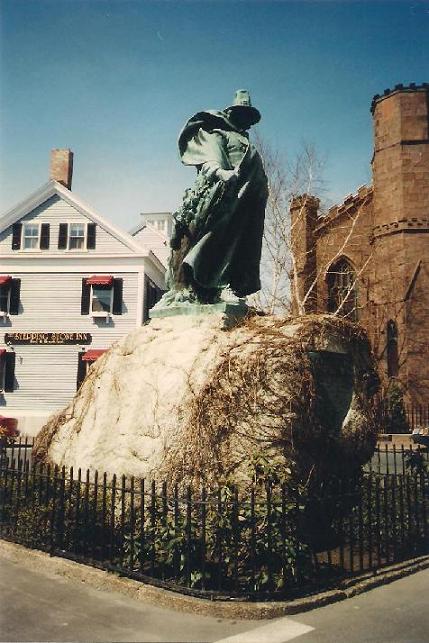
62.35KB
The oversize figure of the grim Puritan looms over the Salem story; though intended as a tribute to leader Roger Conant, it has come to be instead a symbol of intolerance and oppression. The 1840's Gothic-style church in the background is now home to the Salem Witch Museum, a "dramatic" sound-and-light presentation depicting the events through wax tableaus! |
| 3 L A T E S T R E P L I E S (Newest First) |
| Fitzhugh Williams |
Posted - October 23 2011 : 5:00:05 PM
Great stuff!!! You just keep adding to the list of places that I want to visit. |
| James N. |
Posted - October 23 2011 : 3:59:52 PM
The Putnams finally overreached themselves; their accusations had broadened from little Salem Village to Salem, entire Essex County, and eventually even included the wife of the Colonial Governor, which brought the actions against persons accused to an abrupt end. It seems each triumph had encouraged the small group of girls led by Ann, Jr. to greater and greater accusations, even winning the approval of such luminaries as Cotton Mather in far-off Boston, most of whom now cravenly sought to put a distance between themselves and the accusers. Thomas and Ann, Sr. both died in 1699, leaving Ann, Jr. to care for her siblings. She repented the part she played as a 12-year-old accuser, and begged forgiveness before her Meeting; she died in 1716. Rev. Parris was forced to resign his parish, largely due to his opposition by the family of Rebecca Nurse, dying in Sudbury in 1720.
Eventually this sorry episode cost the lives of nineteen "witches" hanged and one accused, Richard Corey, "pressed" to death. ( "Pressing" consisted of being staked spread-eagle on the ground with progressively heavier stones stacked on the accused person's chest, breaking ribs and stopping breathing, all while being goaded into a "confession"; it was considered one of the "gentler tortures" and was legal. Corey died rather than confess to being a warlock because that would've allowed the county to sieze his land, rendering his family homeless and penniless; since he refused to confess, he wasn't technically "guilty", thus sparing his family! ) But the true untold tragedy was the literally hundreds of innocent persons widowed, orphaned, impoverished, and imprisoned unjustly under beastly conditions; the true number of lives ruined is unknown but large.
Image Insert:
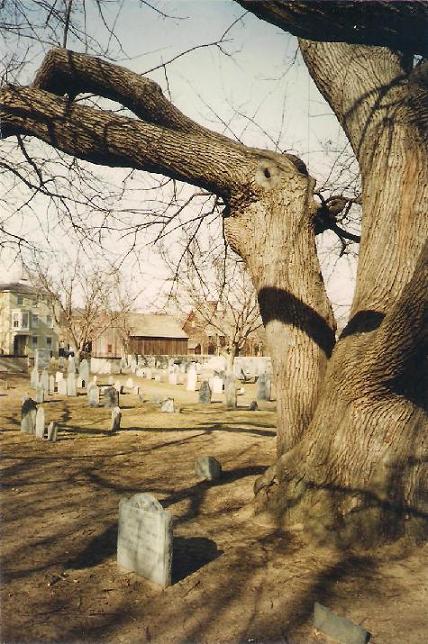
77.56KB
Image Insert:
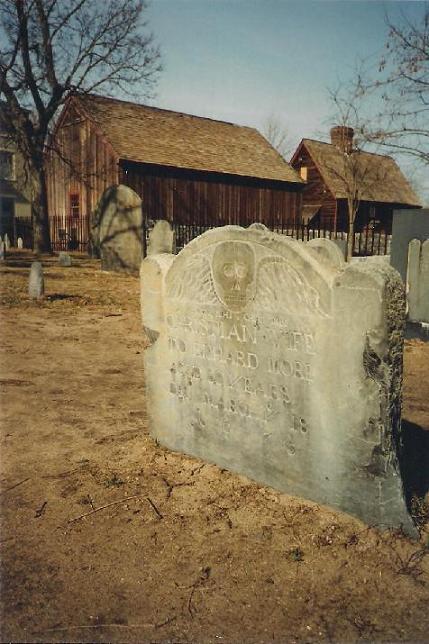
56.92KB
Cemetery in downtown Salem containing Colonial-era graves. None of the victims hanged as "witches" lie in marked graves or public cemeteries, since they were considered outside the protection of the Church, but many of their accusers, judges, the executioner, and ordinary citizens of the time do. Mostly what remains from this sad time are memories, legends, and a few period houses, like this one near the cemetery.
Image Insert:
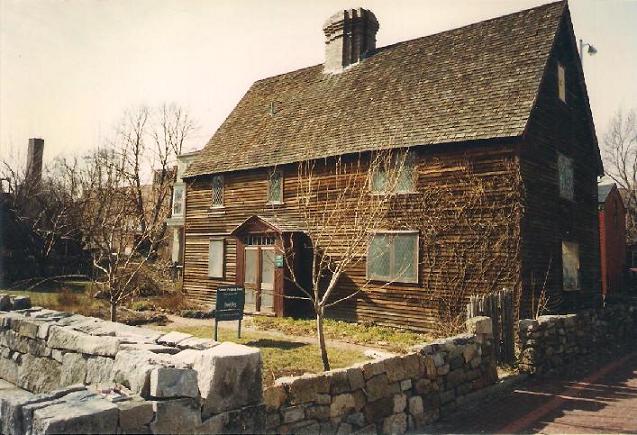
70.82KB
For further reading: The classic accounts of Salem and the Witch Trials are Salem Possessed - The Social Origins of Witchcraft by Paul Boyer and Stephen Nussbaum ( 1974 ) and The Devil Discovered - Salem Witchcraft 1692 by Enders A. Robinson ( 1991 ); but I have relied on and recommend the shorter, more accessable A Guide to the Salem Witchcraft Hysteria of 1692 by David C. Brown ( 1984 ) for the information here.
|
| James N. |
Posted - October 23 2011 : 3:10:14 PM
Author Nathaniel Hawthorne always regretted the part in the Witch Hysteria played by his ancestor, the notorious magistrate John Hathorne, saying that his great-great-grandfather "inherited the persecuting spirit, and made himself so conspicuous in the martyrdom of the witches, that their blood may fairly be said to have left a stain upon him." Nathaniel added the "w" to the spelling of the family name and remained sensitive and pained his entire life, resulting in his masterpieces The Scarlet Letter and House of the Seven Gables, both recounting tales of Puritan immorality.
Image Insert:
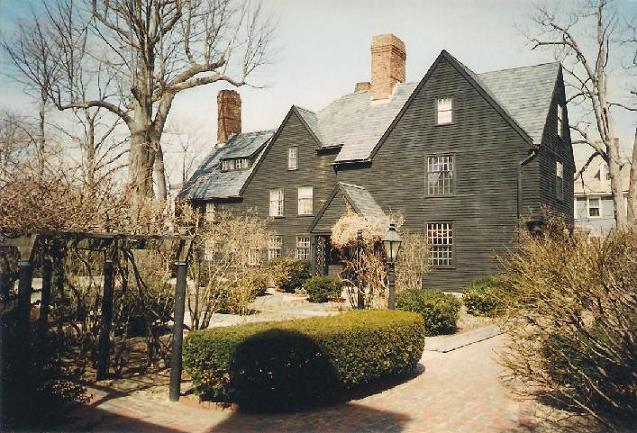
79.61 KB
Image Insert:
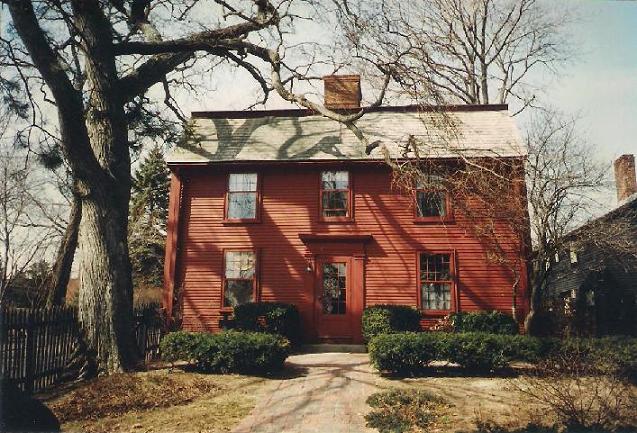
83.47 KB
Image Insert:
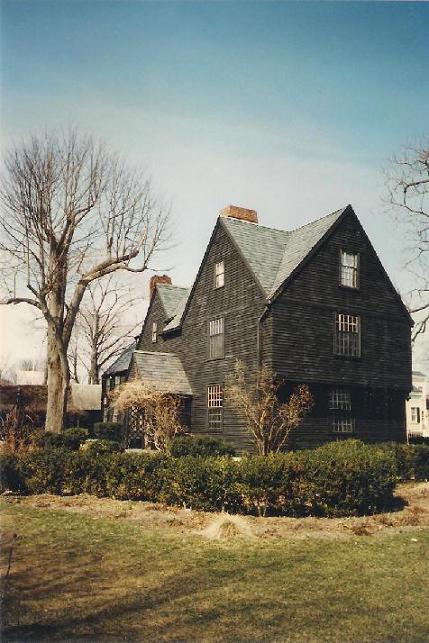
60.87 KB
Two views of the 1600's "House of the Seven Gables" that inspired Hawthorne, now a popular tourist attraction; and the much-later period house in which the writer was born, now moved to the same location.
Another Salem attraction is the mis-named ca. 1670's "Witch House", where tradition says some of the accused may have been questioned in a front room. It's owner, Salem merchant Jonathin Corwin, was another of the magistrates and one who "presided over many of the witchcraft examinations and later served on the Court of Oyer and Terminer."
Image Insert:
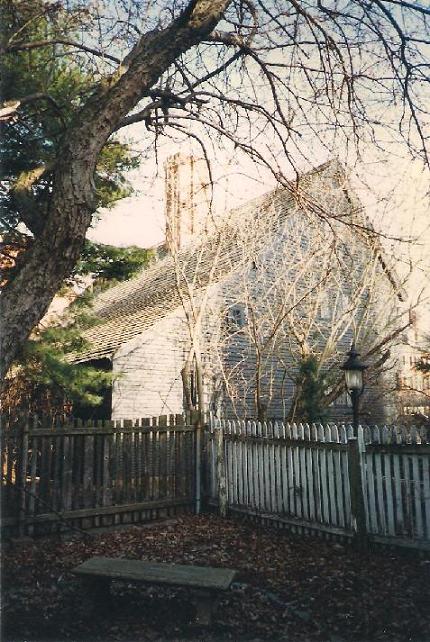
82.58 KB
Image Insert:

32.49 KB
|
|

![The Mohican Board! [Bumppo's Redux!] The Mohican Board! [Bumppo's Redux!]](images/wwwboard.gif)

